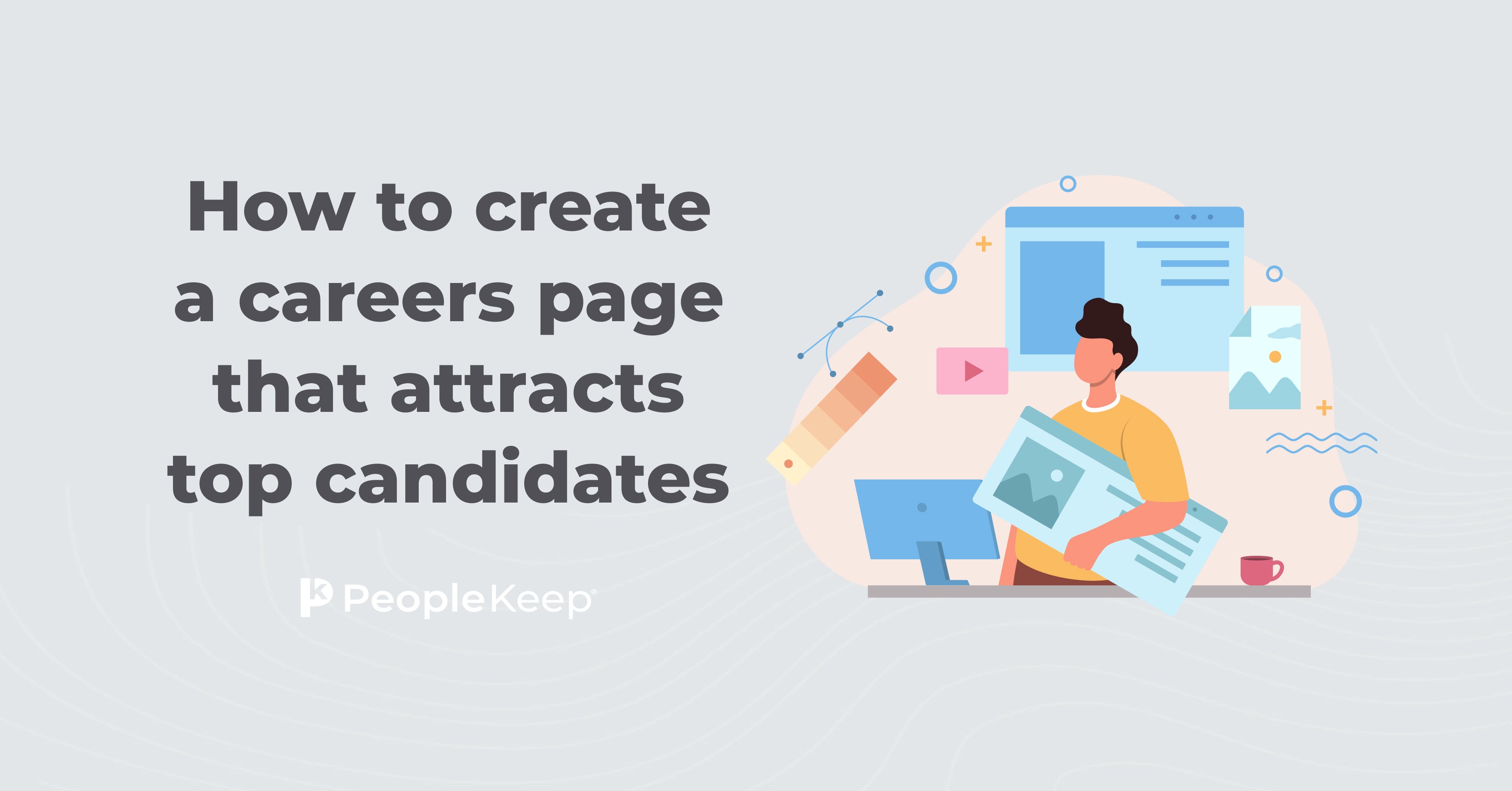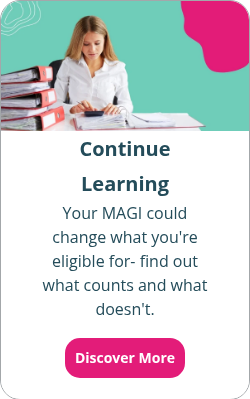What is the employee life cycle?
By Elizabeth Walker on May 17, 2024 at 8:45 AM
As an employer, you’ll see employees come and go through your organization. Understanding how they interact with your organization throughout your time together will help you create a successful and efficient workforce and business. That’s why evaluating and improving your employee life cycle process is vital.
The employee life cycle represents a worker's many key stages at your organization, from the day they learn about your company to the day they end their employment. Analyzing the employee life cycle can help you attract talent, drive performance, and boost employee engagement. That’s why employee life cycle management and improving your staff’s experience are priorities for many businesses1.
In this blog, we’ll review the employee life cycle, including its stages, what makes it essential, and tips and tricks to help you optimize your business.
Takeaways from this blog post:
- The employee life cycle is an HR model used to identify the major stages of an employee’s journey through a company. The six life cycle stages are attraction, recruitment, onboarding, retention, development, and offboarding.
- Analyzing each phase of the life cycle process is essential for optimizing an employee’s overall experience at your organization.
- Having a positive employee life cycle aids in recruitment and retention efforts, saving you money in the long run for company improvements and building a more productive workforce.
What is the employee life cycle?
The employee life cycle is a human resources (HR) model organizations use to identify the key stages of an employee’s journey through a company. There are typically five to seven stages in the employee life cycle, but depending on your company’s size and industry, you may include more stages.
An employee’s life cycle moves chronologically, beginning with awareness of your company, continuing through recruitment and development, and ending with resignation, termination, or retirement. It covers the entire relationship between you and a worker, focusing on their employee experience every step of the way.
Knowing what the employee life cycle covers is only the beginning for you and your HR team. Taking steps to improve the employee life cycle at your organization and understanding how to engage your employees better can make your company more successful in several ways.
What are the six stages of the employee life cycle?
1. Attraction
Your relationship with an employee doesn’t start when you hire them. It starts the moment they experience your company’s brand for the first time, which is the attraction phase. While national brands or prominent industry-leading businesses may have an easier time attracting potential job applicants, all brands should focus on attracting employees. After all, you can’t hire anyone unless they’ve heard of you or run across a job posting.
Building a strong brand and company culture, including outlining your mission and values, will help you become an employer of choice. If you don’t invest enough time in this initial stage, it’ll be hard to make an excellent first impression, making attracting potential applicants more challenging.
You should also remember that potential employees can find your company through various platforms. This means that spotlights and reviews from former or current employees on job sites, like Glassdoor or other social media platforms, can help build your company’s reputation.
A positive company culture and brand that resonates with potential candidates is a sure way to improve your attraction stage. Prospective employees will also want to know your diversity and inclusion policy, who you serve, and your impact on the community, so be sure to include that information on your website.
2. Recruitment
The next stage of the employee life cycle model is the recruitment process. This stage covers all the steps an employee takes during the hiring process. It’s also when job candidates will likely form their first impression of you as an employer and get familiar with your corporate culture and the job details.
The recruitment stage starts with the initial job description. Some companies use talent acquisition software to streamline and automate all aspects of the hiring process. However, you can also incorporate referrals from current and former employees and colleagues to find qualified candidates.
Advertising the position on many platforms is crucial to recruiting a wide range of potential candidates. Nowadays, job seekers find posts on various online job boards, social media sites, job fairs, and employment agencies. The fewer platforms you use, the less reach you’ll have to find an ideal candidate and build a fantastic team.
Great job listings do more than post the job title, responsibilities, and skills needed. To entice good candidates, outline the employee benefits and perks you offer at your company. According to our 2024 Employee Benefits Survey, 81% of employees say an employer’s benefits package is an important factor in whether or not they accept a job. This means potential employees are interested in what benefits and perks they may receive in addition to their base salary.
For example, your benefits package could include the following:
- Health benefits, like health reimbursement arrangements (HRAs)
- Wellness programs
- Paid time off (PTO)
- Flexible work hours
- Tuition assistance
- Retirement benefits
- Commuter benefits
A good employee benefits package should reflect your company's values and entice workers with several options. Comprehensive benefits show your employees you care and want to support their well-being—something every employee appreciates during the recruitment process because it improves their candidate experience.
3. Onboarding
The onboarding stage is for employees who have accepted your job offer and are now part of your company's workforce. In this stage, it’s your responsibility to help your new hires feel like part of the team and prepare them to make their mark on your organization.
During the employee onboarding process, you should provide your new hires with all the necessary information to be efficient and successful at their job. This includes learning about your company's policies and job duties and completing required training. It can take several weeks for new employees to learn all the tools, systems, and processes necessary to be productive, so patience is vital.
Your HR team and IT departments must also collaborate during the onboarding process. These departments must add new hires to your security access management, help them receive their hardware—like a laptop or a company phone—and give authorization to download any programs required to complete their tasks and responsibilities.
Ensure you also share your company’s short- and long-term goals with your new hires and their role in helping the company grow. Lastly, you’ll want to explain to them how you measure employee performance in your onboarding process. This way, they’ll have clear expectations of what you and their direct manager consider good work.
4. Retention
The employee retention stage is a critical component of the employee life cycle. Once employees have been with a company for a while, some employers may start taking them for granted or stop engaging them. That’s why continuous support, recognition, and employee engagement are crucial for keeping your staff happy and satisfied at your company.
Employee turnover happens in any business, but you can take steps to keep your employees performing and contributing to your business’s success. The simplest way to do this is with a recognition program. As stated earlier, ensure employees know how to reach their goals and how you’ll reward them. Also, encourage your HR team to keep records of their successes.
Another way to build a supportive workplace culture that employees want to remain in is by listening to their suggestions. By creating a safe space for giving and receiving feedback, you’ll have more engaged employees who are comfortable sharing their ideas and thoughts.
Lastly, benefits are one of the best ways to improve employee satisfaction and make your workers feel rewarded and appreciated. Showing employees you care about their needs outside the workplace improves employee morale, reducing turnover rates and costs.
If you’re struggling with your employee retention rate, adding a variety of perks to your compensation package can help your employees have a more positive experience.
According to our Benefit Survey, employees find modern fringe benefits, like PTO and mental health benefits, to be “very important” benefits. So, it doesn’t hurt to take another look at your benefits package and make adjustments.
5. Development
Once an individual employee settles in at your company, the next step is offering employee development opportunities. This step often goes hand in hand with employee retention efforts, so you don’t want to wait to start.
External career development conferences, seminars, webinars, and internal knowledge sharing with other departments keep your employees learning and engaged. Not only do you want your employees to stay current with new industry trends, but you’ll also show them you care by investing in their education and professional development.
During the development stage, you can help your employees see their potential for long-term career growth by:
- Encouraging your managers to regularly check in with their employees on their short- and long-term career paths and areas they want to improve.
- Implementing professional employee development courses, certification classes, or other educational events across all your teams.
- Providing regular training and growth opportunities.
- Offering external learning opportunities with incentives for employees who attend.
Some workers are happy staying in the same role long-term. But, many productive employees want to improve their skills and grow within an organization. Our Benefits Survey found that 52% of employees value educational assistance and professional development benefits in the workplace, but only 27% of business owners provide them.
6. Offboarding
This final stage of the employee life cycle model is when employees decide to move on. Whether they’re leaving for retirement or personal reasons, or their employer laid them off or terminated them for poor performance, they must have a positive exit experience.
Having your offboarding stage be a smooth transition of tasks, knowledge sharing, and cross-training for anyone temporarily taking over the departing person’s tasks or responsibilities is as important as HR and IT preparing their final payroll, benefits, and required documents.
For example, you’ll likely get the most honest feedback during the employee journey in the exit interview process. Exit interviews are a valuable asset because you can use the feedback to improve the employee experience for your next new hire. It may also enlighten you on how your policies or organizational culture make your employees really feel.
The way your employees leave will still impact your organization—even if they’re gone. If they leave on a good note, departed employees can be brand advocates or “alumni” of your company. You may see them at industry events or ask them for referrals when hiring for a new role.
If you burn bridges or your offboarding process is lacking, a negative experience will be the last thing your employee remembers. They may even go so far as to leave negative reviews about your business, which, in turn, could harm your reputation and brand.
That’s why taking the time to understand why an employee is leaving, running a successful exit survey, and getting honest and regular feedback is the best strategy. Even if you don’t run into a past employee again, getting their input on what you can do to make your company a better workplace for current and future employees can only help you in the long run.
Why is understanding the employee life cycle essential?
Because employees are the backbone of any organization, improving each of the employee life cycle stages are paramount to a company’s overall success. Once you understand your employees' steps, you can optimize each stage and create a more positive employee experience.
It aids recruitment and retention efforts
One benefit of improving the employee life cycle is that it aids recruitment and retention efforts—which can be costly. According to the Society for Human Resource Management (SHRM), a typical U.S. business owner spends roughly $4,700 to hire a new employee2.
Another article found the hiring costs for a new employee can be as much as $20,0003. If you can retain your employees longer by keeping them happy and engaged, you’ll have fewer positions to fill, saving you money in the long run.
Recruitment and retention often go hand in hand. This is why understanding how they impact the employee life cycle is so important. After all, even one employee’s experiences—whether positive or negative—can influence others to either stay or leave your company.
It gives you important data
A benefit of tracking an employee’s life cycle is that it allows you to analyze data. For example, an employee’s exit interview during offboarding contains valuable information that can lead to company improvements. How an employee leaves your company can have a lasting impact on your business—especially if they leave with a negative experience.
It allows you to build a driven workforce
The best benefit of understanding the employee life cycle model is that you have no downside. All you need to do is gather regular feedback from your employees as they move through each stage and determine where to make adjustments.
By improving the employee experience, you can attract top candidates, build a driven workforce, and prove to your employees that you care. And the more you show you care, the more likely your employees will keep working for you.
Conclusion
Understanding the distinct stages of the entire employee life cycle isn’t just important for your employees—it can also set your business up for success. The more satisfied your employees are, the longer their life cycle will be, and the more they’ll contribute toward building a positive company culture.
If you’ve begun reworking your organization's entire employee journey, you may notice some gaps in your process. If your employee compensation package is one of those gaps, adding personalized benefits goes a long way toward attracting and retaining workers and improving the corporate culture at your company for years to come.
This article was originally published on December 7, 2022. It was last updated on May 17, 2024.
1. https://educegroup.com/blog/whats-driving-talent-management-trends/
Check out more resources
See these related articles

How to create a careers page that attracts top candidates
Looking to attract top talent? Discover the secrets to creating a careers page that stands out and grabs the attention of qualified candidates.

Unique employee benefits ideas for all budgets
Discover unique employee benefits ideas for all budgets. Learn how to boost retention and morale with creative perks that fit your business needs.

What is indirect compensation and why is it important?
Learn what indirect compensation is and why it’s crucial for recruitment and retention. Discover how benefits beyond salary can attract and retain talent.



